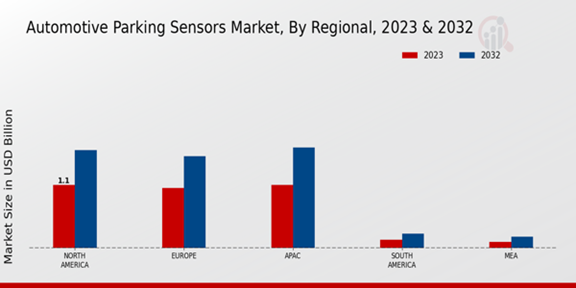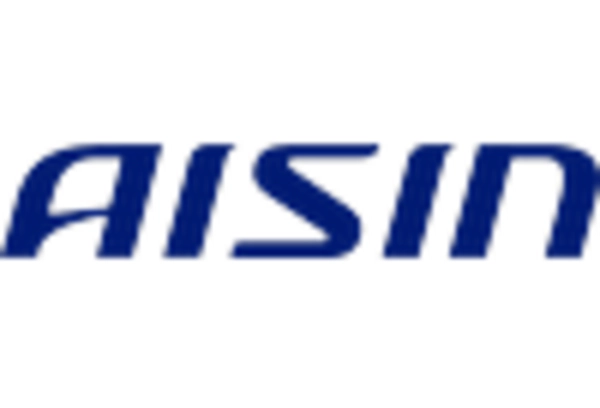Growing Awareness of Vehicle Safety
In recent years, there has been a marked increase in consumer awareness regarding vehicle safety, which significantly influences the Automotive Parking Sensors Market. As more individuals recognize the importance of safety features in vehicles, the demand for parking sensors has escalated. According to recent data, vehicles equipped with parking sensors are perceived as safer, leading to a potential increase in their market share. This heightened awareness is further fueled by regulatory bodies advocating for enhanced safety measures in automobiles. Consequently, manufacturers are compelled to integrate advanced parking sensor systems into their vehicles to meet consumer expectations and comply with safety regulations. This trend indicates a promising outlook for the Automotive Parking Sensors Market, as safety becomes a paramount consideration for both consumers and manufacturers alike.
Rising Demand for Autonomous Vehicles
The Automotive Parking Sensors Market is significantly influenced by the rising demand for autonomous vehicles, which rely heavily on advanced sensor technologies for navigation and parking. As manufacturers develop vehicles with autonomous capabilities, the integration of sophisticated parking sensors becomes essential for ensuring safe and efficient parking maneuvers. Projections indicate that the market for autonomous vehicles will grow at a compound annual growth rate of over 25% in the coming years, further driving the need for advanced parking sensor systems. This trend suggests that as the automotive industry shifts towards automation, the Automotive Parking Sensors Market will likely expand, with increased investments in sensor technology to support the development of fully autonomous vehicles.
Integration with Smart City Initiatives
The Automotive Parking Sensors Market is poised to benefit from the integration of smart city initiatives that aim to enhance urban mobility and reduce congestion. As cities adopt smart technologies, the demand for intelligent parking solutions, including parking sensors, is expected to rise. These systems can provide real-time information about available parking spaces, thereby streamlining the parking process for drivers. Recent studies indicate that cities implementing smart parking solutions have seen a reduction in traffic congestion by up to 30%. This trend suggests that as more municipalities invest in smart city infrastructure, the Automotive Parking Sensors Market will likely experience significant growth, driven by the need for efficient and user-friendly parking solutions.
Urbanization and Increased Vehicle Ownership
The ongoing trend of urbanization and the corresponding rise in vehicle ownership are pivotal drivers for the Automotive Parking Sensors Market. As urban areas become more densely populated, the challenges associated with parking are exacerbated, leading to a greater need for efficient parking solutions. Data suggests that urban vehicle ownership is expected to increase by 20% over the next five years, which will likely intensify the demand for parking assistance technologies. Parking sensors play a crucial role in mitigating parking difficulties, thereby enhancing the overall driving experience. This growing urban population, coupled with the increasing number of vehicles, indicates a strong potential for growth in the Automotive Parking Sensors Market as consumers seek innovative solutions to navigate urban parking challenges.
Technological Advancements in Sensor Technology
The Automotive Parking Sensors Market is experiencing a surge in technological advancements, particularly in sensor technology. Innovations such as ultrasonic, radar, and camera-based sensors are enhancing the accuracy and reliability of parking assistance systems. These advancements not only improve the user experience but also contribute to the overall safety of vehicle operation. As of 2025, the market for ultrasonic sensors alone is projected to reach a valuation of approximately 1.5 billion USD, indicating a robust growth trajectory. The integration of artificial intelligence and machine learning into these systems further enhances their capabilities, allowing for real-time data processing and improved obstacle detection. This trend suggests that as technology continues to evolve, the Automotive Parking Sensors Market will likely see increased adoption rates among consumers seeking advanced safety features.


















Leave a Comment